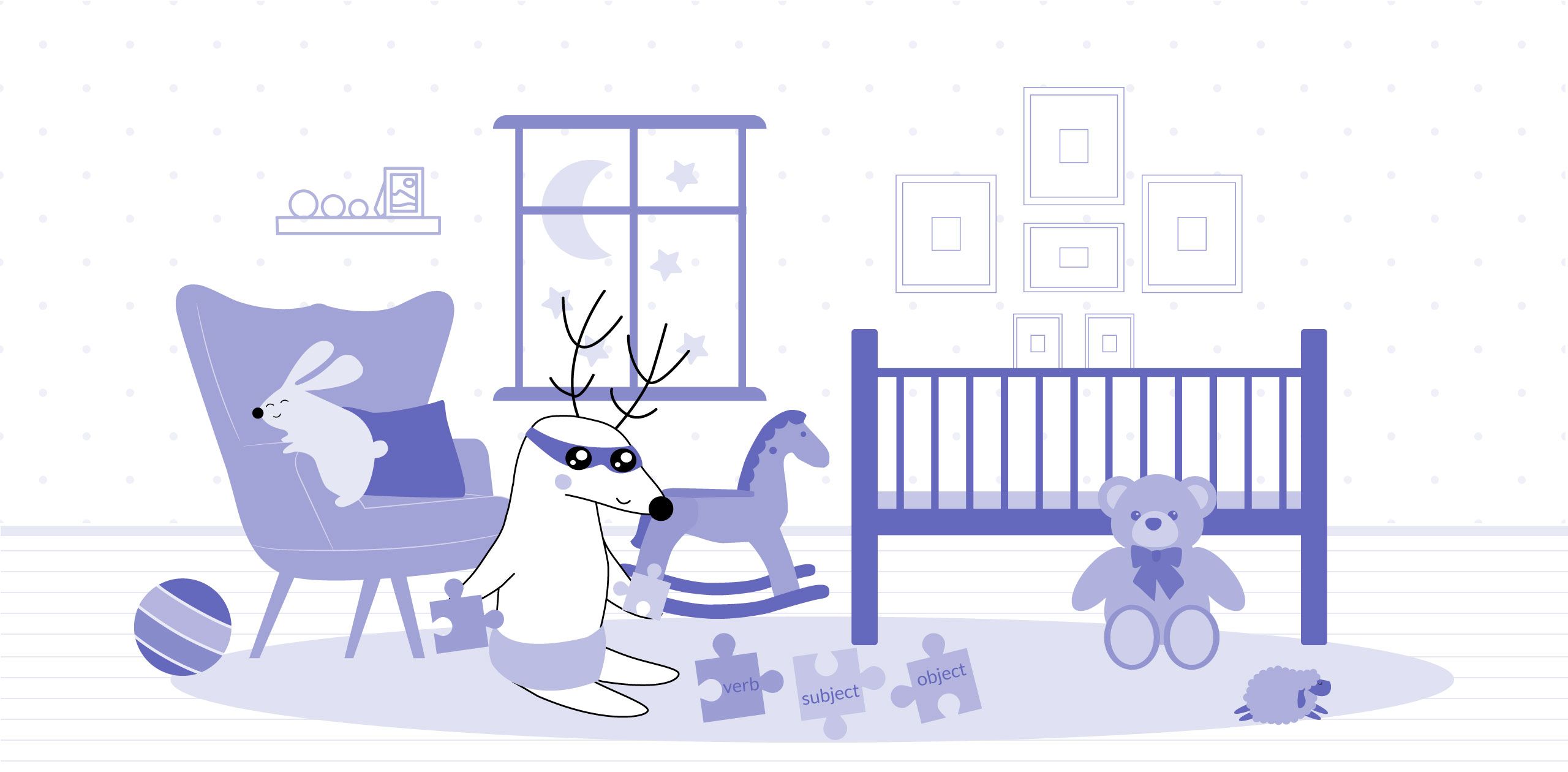
If you're learning German, you've probably noticed that the language has several different articles. That is because nouns in German can be feminine, masculine, or neutral.
That can be confusing for an English speaker as the English language has only one definite article, "the." Nevertheless, with a bit of explanation, German articles will be no problem for you.
We hope that this post will help you learn how to use German articles. We will teach you everything you need to know about indefinite and definite articles so that you can use them like a native German speaker. So let's get started:
Learn German with Langster
What Are Definite and Indefinite Articles?
Before we look at definite and indefinite articles in the German language, let's take a look at the way they're used in general.
In the English language, for example, you use a definite article to refer to a noun that is known to the listener, while an indefinite article is used to refer to a noun that is not defined.
Consider the following example: "The woman leaves the shop." When we use the definite article "the" we give the impression to the listener that we are describing a specific woman we both know. The listener may recognize the woman or know her from context. There may only be one woman in the shop.
When we say "A woman leaves the shop," it is unclear which woman we are referring to. Neither the listener nor we are familiar with the woman. There may be many women in the shop.
Definite and indefinite articles are used in German the same way they are in English - but there are quite a few articles you need to choose from instead of just two.

German Definite Articles
As previously stated, there are three different genders in German, and thus three different definite articles "der, die, das." "Der" is the masculine article, "die" is the feminine article, and "das" is the neutral article.
You may be familiar with feminine and masculine articles from other languages, such as French "le" and "la," or Spanish "el" and "la." The German "das" is a third definite article that is used for the neuter nouns that exist in German.
When to Use Which German Article?
Unfortunately, there are no rules in German that define the gender of a noun. The majority of the words are exceptions, and in order to learn German, you must learn each noun along with its specific article.
Nevertheless, there are a few suggestions in the German language regarding nouns' gender - let’s take a look at them, so that at least some articles are easier to remember.
Natural Gender Is Grammatical Gender
There are some German nouns that have a feminine or a masculine nature. The word "boy," for example, describes a masculine human being, and so has the masculine article "der" in German. It would be "der Junge."
Other examples are "die Frau" (the woman) or "der Mann" (the man). You can also see it in professions - for example, "die Ärztin" (the female doctor).
The same rule applies to animals, even though the common animal's name is often neutral. The specific names for female or male animals have feminine or masculine articles, though. The case "das Pferd" (the horse), "die Stute" (the mare) and "der Hengst" (the stallion) is a perfect example that can show you how to use all the definite articles "der, die, das."

Nevertheless, we can also observe here why the German language is full of exceptions: the feminine noun "the girl" is translated as das Mädchen" in German and is used together with the neutral article. The same rule applies for "the miss," which is "das Fräulein" in German (and not a feminine noun).
Does the Noun's Ending Define the Gender?
Sometimes it does, but there are many exceptions. For example, while in the Spanish language a noun ending in -a is usually feminine, in German, the ending -a can be applied to all genders.
You can see it in the case with "sofa," which is "das Sofa" in German, and so it is a neutral noun. However, "the camera" would be "die Kamera."
Nevertheless, there are some rules that define the noun's gender in German and can help you learn German.
Feminine Noun Endings
There are a few endings that indicate the feminine nature of a German noun.
For example, the suffix -keit, or -heit that appears in "die Traurigkeit" (the sadness), or "die Weisheit" (the wisdom).
Also, many words ending in -ei or -ung such as "die Bäckerei" (the bakery) or "die Einigung" (the agreement), are feminine in German. Furthermore, many international words ending in -ion in German and are also usually feminine. Examples are "die Institution" or "die Situation."
Masculine Noun Endings
In German, there are also similar rules for masculine nouns. If the German word ends in -ig, or -ling, like the nouns "der Honig" (the honey) or "der Schmetterling" (the butterfly), it is typically masculine.
The same happens with German words ending in -er or on -en, like "der Computer" (the computer), or "der Regen" (the rain).

Neuter Noun Endings
For the neuter nouns, the endings -ment or -nis are often used, such as in "das Dokument" (the document), or "das Ergebnis" (the result).
It is also common to find the article "das" with words that end in -tum or -um. Two examples are "das Christentum" (the Christianity) and "das Zentrum" (the center).
The Plural Form Comes With the Feminine Article in German
What to do when you come across a plural noun in the German language?
The good news is that all German words in the plural form have the same definite article. German speakers use the feminine article "die" for plural nouns of all three genders. To give you an example, have a look at the following words:
| German singular | Translation | German plural | Translation |
|---|---|---|---|
| der Stuhl | the chair | die Stühle | the chairs |
| die Tür | the door | die Türen | the doors |
| das Auto | the car | die Autos | the cars |
| German singular | Translation | German plural | Translation |
|---|---|---|---|
| der Stuhl | the chair | die Stühle | the chairs |
| die Tür | the door | die Türen | the doors |
| das Auto | the car | die Autos | the cars |
You can see that all three articles turn to "die" in the plural. You also might notice that the words change a little in their plural forms. There are specific rules for that, but we will discuss that in a different post.
The Indefinite Articles in German
If you want to use an indefinite article in German, you have different articles for each gender again. The English indefinite article "a" can be "ein," or "eine" in German. You should use "eine" for feminine nouns, while "ein" is used for masculine and neuter nouns.
The neuter noun "das Mädchen" (the girl) would be "ein Mädchen" (a girl), and also the masculine noun "der Mann" (the man) would be "ein Mann" (a man) if we’re using the word in the indefinite case. For feminine nouns such as "die Frau" (the woman), you would say "eine Frau" (a woman).
Because there is no indefinite form when speaking generally in the plural, the indefinite article only works in the singular. You can see this in the following English phrase: "A kid laughs" becomes "kids laugh" when put in the plural.

German Articles in Different Grammar Cases
Now that you know the definite articles "der, die, das" and the indefinite articles "ein, eine" we can introduce you to the German grammar case system. The German language has four grammar cases: nominative, genitive, dative, and accusative.
The cases make the articles change their original form, and you will find definite articles such as "dem" or "den" in German. Those words are not new vocabulary, but different versions of the articles you have already learned.
They are changed to indicate which grammar case a noun in the sentence is put in. We'll go over the grammar cases in another post and show you which article you need to use in which situation. But below, you will find a short overview.
Note that in the nominative case, you will simply use the articles "der, die, das."
Feminine Nouns in Different German Cases
With feminine nouns, the article "die" changes to "der" in the genitive and dative case. In the accusative case, it doesn't change. Here’s an example:
- Nominative case (describes the subject of the sentence):
German
English
Die Frau schwimmt.
The woman swims.
- Genitive case (shows possession):
German
English
Der Hund der Frau schwimmt.
The woman's dog swims.
- Dative case (used when talking about the indirect object):
German
English
Der Hund gehört der Frau.
The dog belongs to the woman.
- Accusative case (used when talking about the direct object):
German
English
Der Hund sucht die Frau.
The dog looks for the woman.
You might not understand how the different cases work, but we will go over that in further posts. Now, it is important that you see how the article "die" changes with the noun "Frau" (woman) in different cases. Note that it is not the noun that changes its gender, but the case that changes the article.
Masculine and Neuter Nouns in Different German Cases
We will give you the same example for masculine nouns:
- Nominative case:
German
English
Der Mann schwimmt.
The man swims.
- Genitive case:
German
English
Der Hund des Mannes schwimmt.
The man's dog swims.
- Dative case:
German
English
Der Hund gehört dem Mann.
The dog belongs to the man.
- Accusative case:
German
English
Der Hund sucht den Mann.
The dog looks for the man.
You can see that the masculine article changes in all the cases other than nominative. Even for native speakers, this can be confusing sometimes.
Luckily, the neutral article changes almost in the same way as the masculine does. Look at the following example:
- Nominative case:
German
English
Das Kind schwimmt.
The kid swims.
- Genitive case:
German
English
Der Hund des Kindes schwimmt.
The kid's dog swims.
- Dative case:
German
English
Der Hund gehört dem Kind.
The dog belongs to the kid.
- Accusative case:
German
English
Der Hund sucht das Kind.
The dog looks for the kid.
The neutral article changes in genitive and dative cases and does that in the same way the masculine article does, so there is no need for extra practice.
Final Thoughts
The definite and indefinite articles are probably one of the most difficult things to learn when it comes to German. It is not challenging to memorize "der, die, das" as words, but it’s important that you know when and how to use them in complete sentences.
Try not to be too hard on yourself. Even native German speakers don't use the correct gender sometimes. When you start learning about the German case system, it will also get easier to use different articles.
We hope that we were able to awaken your interest when it comes to this topic - and also explain it clearly. To learn more about the German language, check our other posts on our blog or download the Langster app and make your language learning journey a bit more fun.








